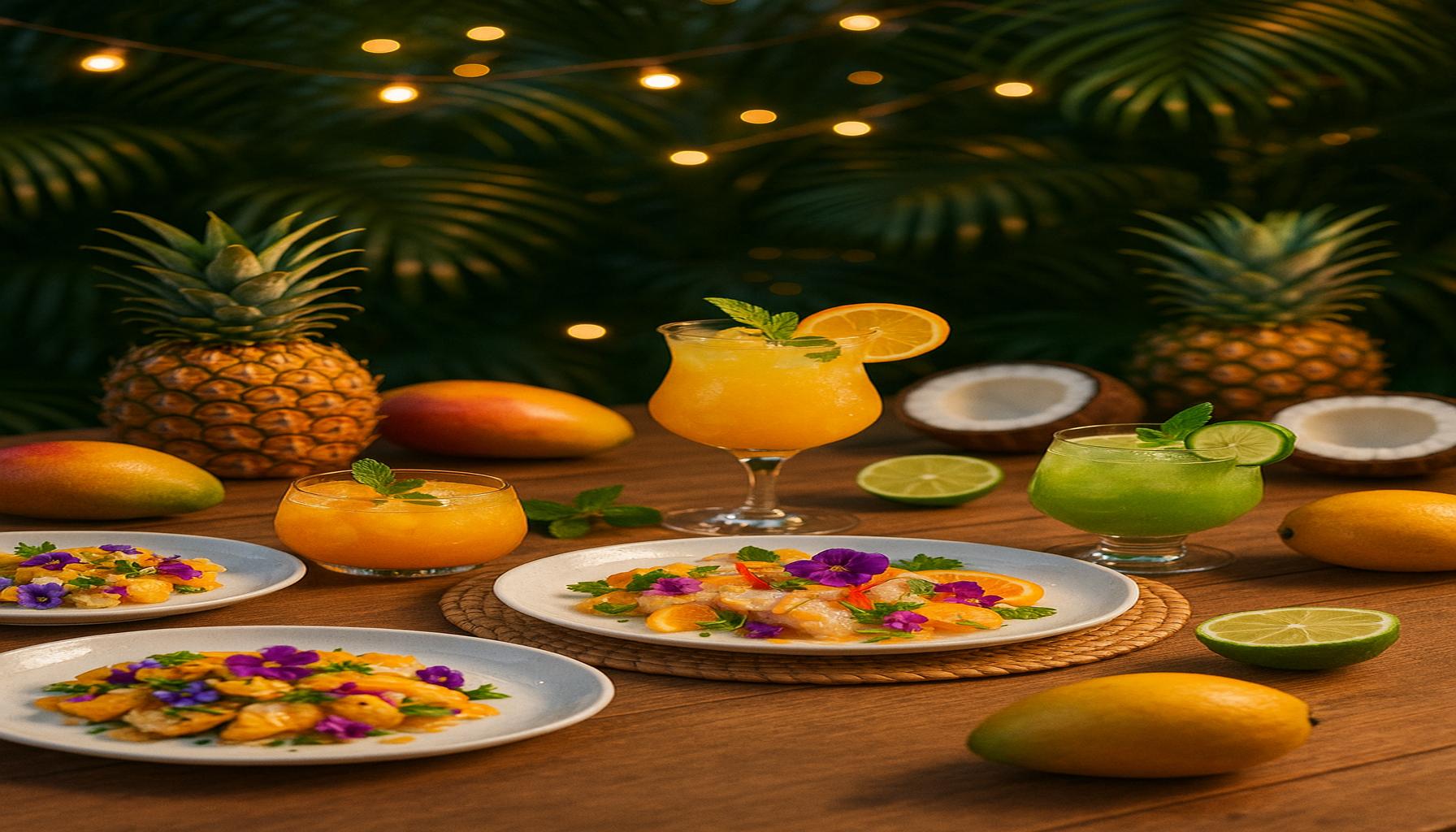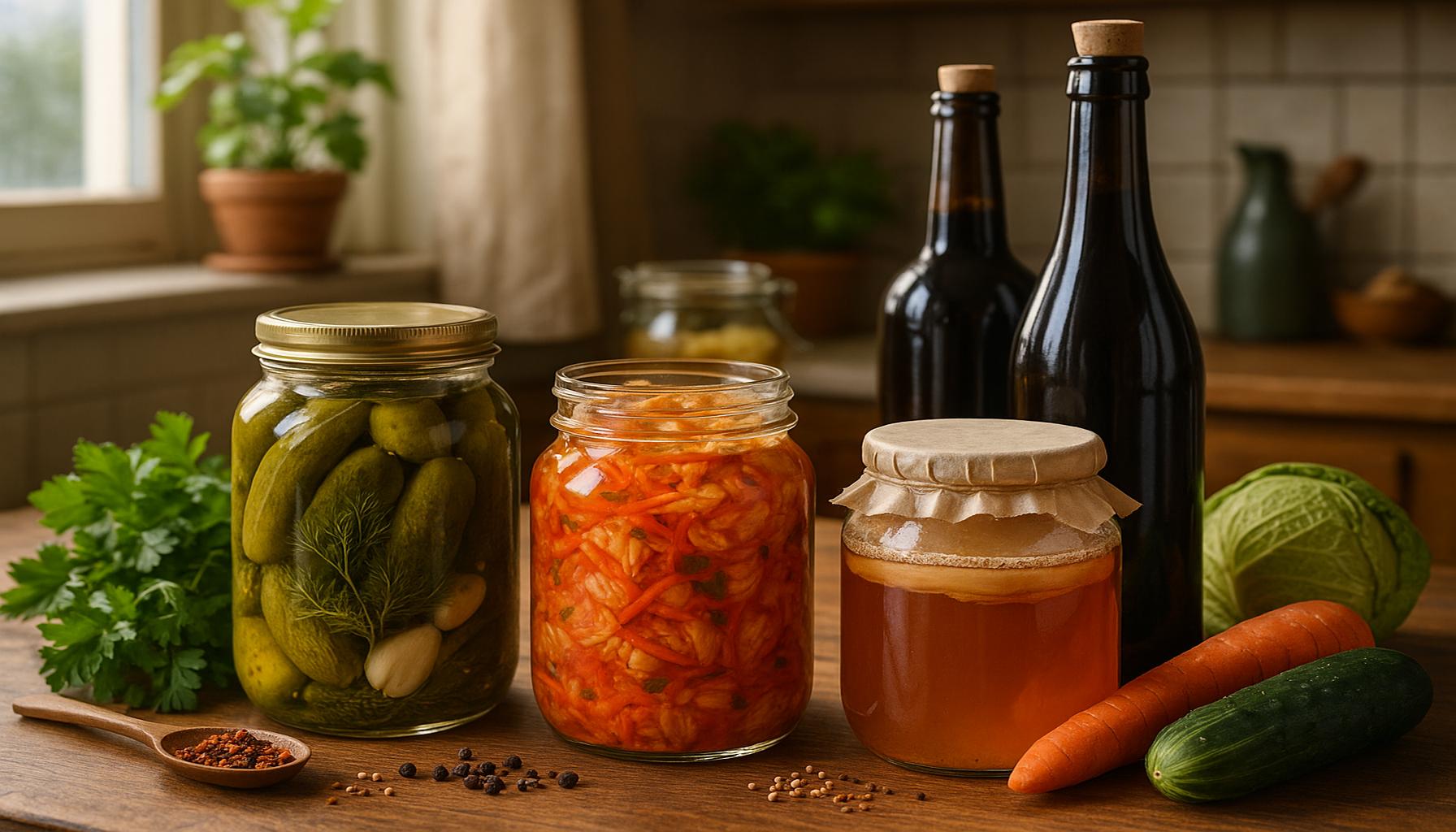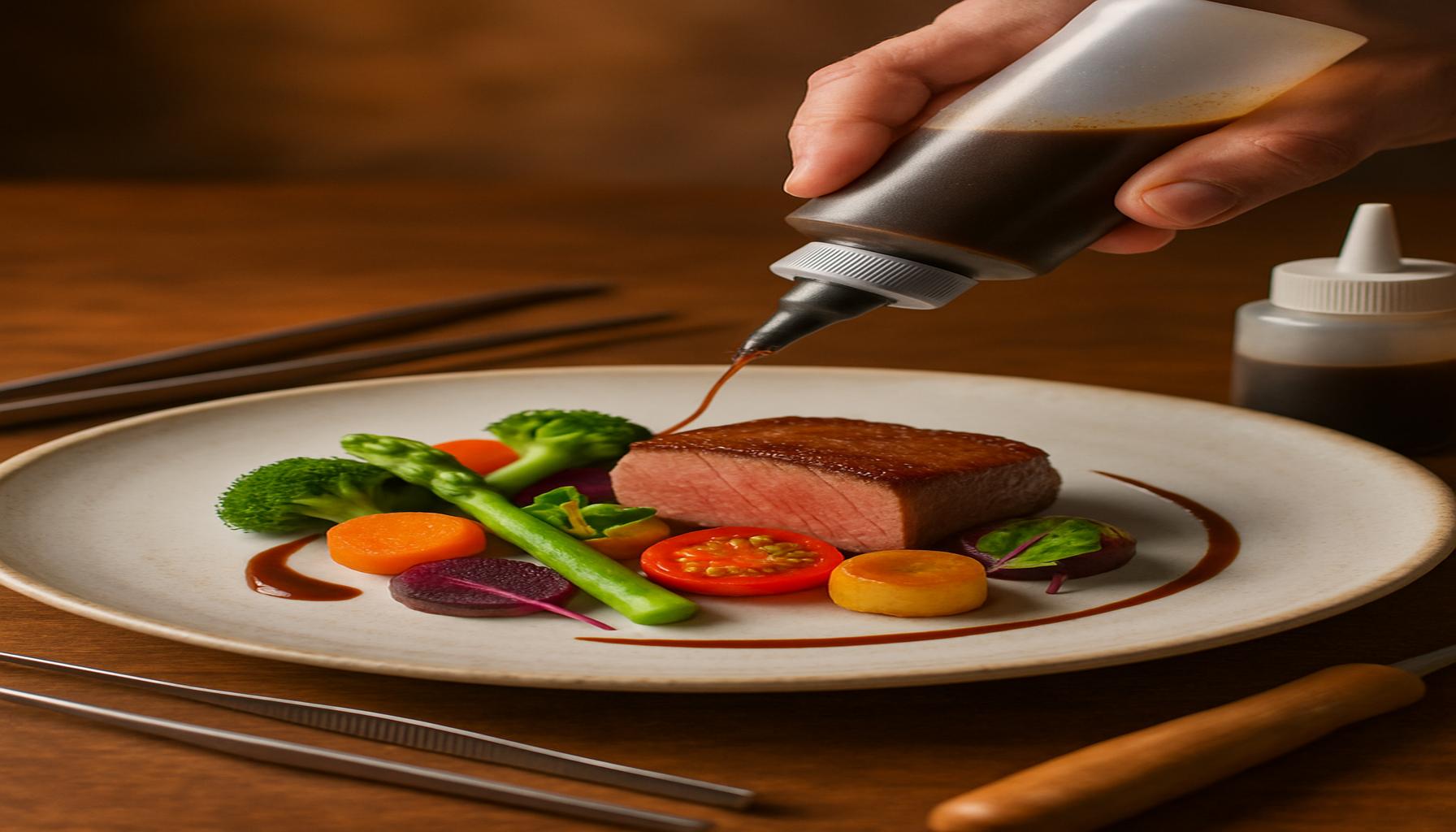Fusion Cuisine: Blending Culinary Traditions from Different Cultures
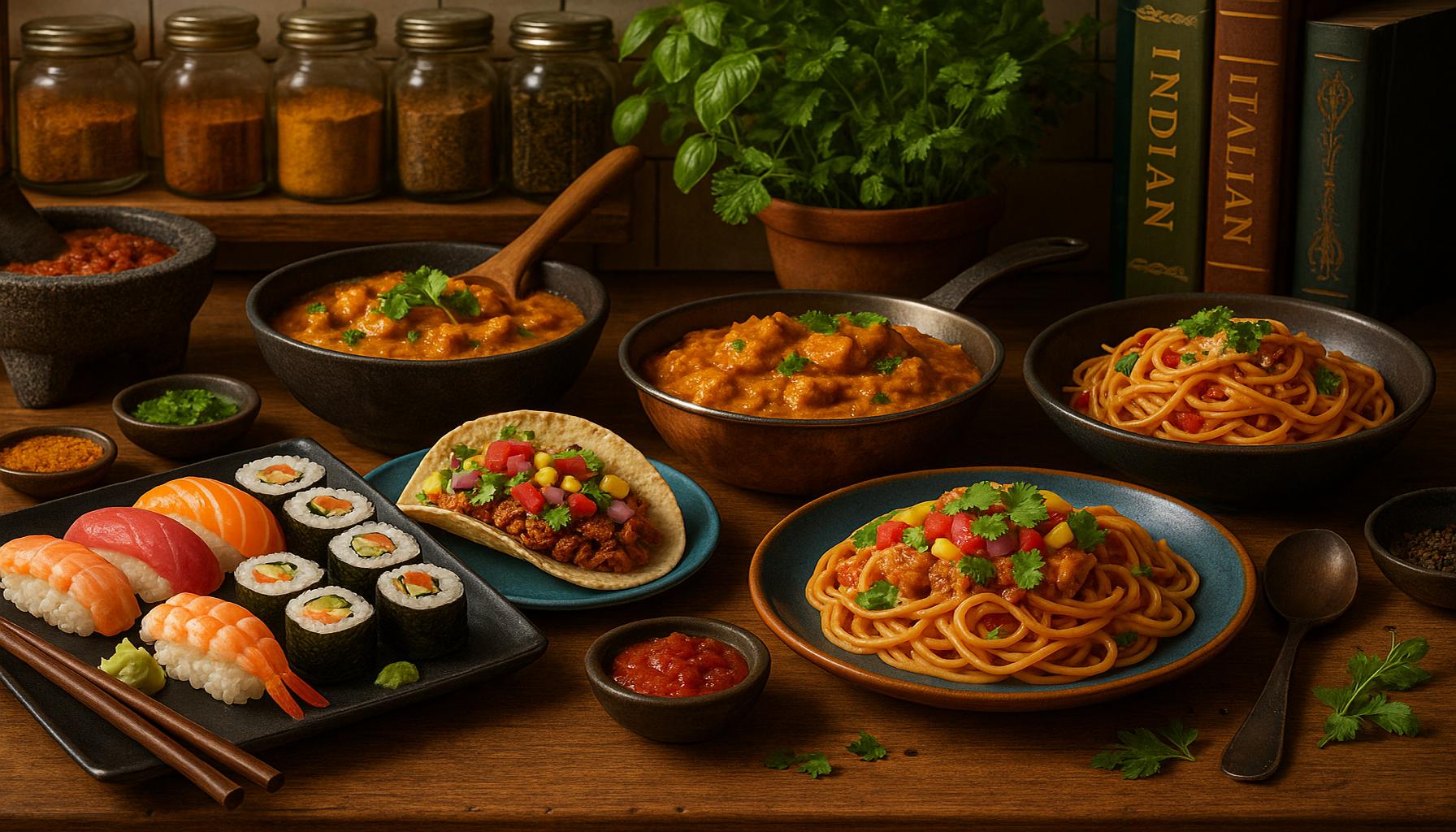
A Deeper Dive into Fusion Cuisine
Fusion cuisine is a culinary adventure that transcends traditional boundaries, intertwining flavors, techniques, and ingredients from various cultures to create unique dishes that tell a story. This innovative approach allows chefs and home cooks to engage in tantalizing experiments, yielding results that surprise and delight the senses.
At the core of fusion cuisine is the art of creativity. It encourages a culinary exploration where familiar staples are reimagined. For example, the concept of Mexican-Korean Tacos marries the smoky, spicy notes of Korean barbecue with the comforting texture of a traditional Mexican tortilla. Imagine biting into a soft corn tortilla filled with marinated bulgogi beef, topped with vibrant kimchi slaw and a drizzle of spicy gochujang sauce, creating a delightful explosion of flavors.
Another noteworthy example is Italian Sushi. It creatively melds Japanese sushi-making techniques with Italian ingredients. Think of a sushi roll filled with prosciutto, fresh mozzarella, and sun-dried tomatoes, wrapped in sushi rice and nori. This combination not only enhances the flavor profile but also challenges our preconceived notions of what sushi can be.
The Indian-Pizza Fusion takes the beloved pizza to a whole new level. This dish features a classic pizza base topped with tikka masala, chunks of paneer, and a sprinkle of fresh cilantro. Each bite brings a spicy kick that’s reminiscent of the vibrant flavors from Indian kitchens, while still remaining comfortingly cheesy and satisfying, much like a classic American pizza.
This culinary trend is much more than just merging flavors; it fosters cultural exchange and appreciation among diverse audiences. By blending culinary traditions, chefs can showcase:
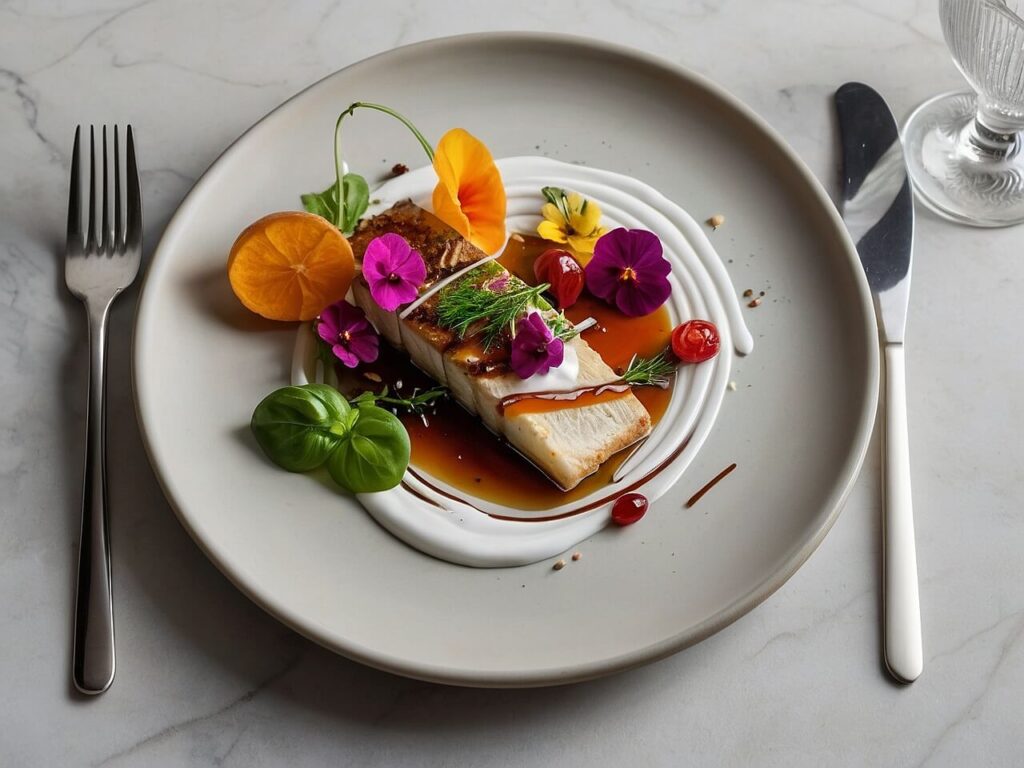
- Innovative flavor combinations: The unexpected blending of sweet, spicy, savory, and sour across cuisines leads to culinary masterpieces.
- Unique dining experiences: Diners are invited to embark on a gastronomic journey, engaging their palates in ways they may never have imagined.
- A broader understanding of global gastronomy: This trend encourages exploration beyond regional cuisines, expanding the culinary vocabulary of food lovers everywhere.
As fusion cuisine continues to evolve, its influence can be seen in food festivals, pop-up restaurants, and home kitchens across America. Each dish not only tantalizes taste buds but also serves as a narrative of the interconnectedness of cultures. It invites diners to explore the world through food, offering a rich tapestry of experiences that foster understanding and unity. With endless possibilities and innovative pairings, the culinary world of fusion cuisine remains an exciting domain for those eager to discover new flavors while savoring the essence of tradition.
DISCOVER MORE: Click here to enhance your well-being through music
Exploring the Roots of Fusion Cuisine
Fusion cuisine’s fascinating tapestry is woven from the rich threads of culinary history from around the globe. This remarkable movement began as a necessity, stemming from cultural exchanges facilitated by trade, migration, and globalization. Chefs seeking to capture the essence of diverse culinary techniques have transformed their kitchens into laboratories of flavor experimentation.
Throughout history, numerous cultures have displayed a natural inclination toward culinary fusion. One of the earliest examples is the trade between the East and West, where the introduction of spices such as cinnamon, cardamom, and black pepper sparked a culinary revolution throughout Europe. The Renaissance period saw chefs experimenting with flavors from Africa, Asia, and the Americas, leading to the birth of exquisite dishes that highlighted the importance of ingredients from varied sources.
In contemporary times, cities such as Los Angeles, New York, and Miami have become melting pots of flavors and techniques, resulting in a vibrant food scene where chefs are increasingly willing to challenge conventional culinary norms. This openness has led to the birth of various sub-genres within fusion cuisine, such as:
- Tex-Mex: A delightful amalgamation of Southwestern American and traditional Mexican cuisines, featuring iconic dishes like nachos and fajitas that are now staples in American dining.
- Peruvian-Japanese Nikkei: This vibrant fusion utilizes fresh ingredients from both cultures, giving rise to dishes like tiradito, a Peruvian counterpart to sashimi, drizzled with spicy sauces.
- Caribbean-Asian: Influenced by the culinary traditions of Chinese and Indian immigrants, this fusion offers vibrant dishes such as jerk chicken spring rolls, where spicy grilled meat meets the crunch of a classic Asian appetizer.
In the United States, where cultural diversity is celebrated, the fusion cuisine trend has sparked an entire generation of chefs willing to push boundaries. Some create novelties by combining iconic regional dishes, others opt for an honest commentary on their cultural backgrounds. For instance, chef Roy Choi masterfully connects his Korean heritage with the taste of Los Angeles street food through his famous Korean taco truck, Kogi, which has enthralled customers across the nation.
But fusion cuisine is not without its challenges. It requires skillful balance; too many conflicting flavors can lead to dishes lacking coherence. The art lies in understanding each ingredient’s unique characteristics and ensuring that they harmoniously complement one another to enhance overall taste. Successful fusion chefs pay close attention to traditional cooking methods while simultaneously adapting them to accommodate flavor profiles from other cultures, allowing them to redefine beloved classics.
The journey to mastering fusion cooking is ongoing and filled with opportunities for culinary innovation. As chefs continue to embrace creative risks, they invite diners to experience newfound possibilities in flavor and technique. This remarkable synthesis not only nourishes the body but also nourishes the cultural dialogue, highlighting the indispensable role of food in connecting us across different backgrounds.
| Advantages | Description |
|---|---|
| Cultural Exchange | Fusion cuisine promotes cultural exchange by integrating diverse culinary traditions, creating a platform for shared experiences. |
| Innovative Flavors | This theme encourages innovative flavor profiles, allowing chefs to experiment with ingredients and techniques from various cultures. |
| Broadened Palate | Diners experience a broadened palate, enhancing appreciation for global cuisines while enjoying familiar tastes in new forms. |
| Sustainable Practices | Fusion cuisine often promotes sustainable practices, as chefs source local ingredients while embracing global dishes. |
The charm of fusion cuisine lies in its ability to weave together narratives of history, culture, and innovation into a single dish. As chefs explore regional ingredients and culinary techniques, they not only elevate their craft but also educate diners about food’s ability to transcend geographic boundaries. This culinary movement is not merely about mixing flavors; it acts as a bridge connecting people, stories, and traditions, sparking curiosity in the diverse world of culinary arts. Furthermore, the sustainable approach many fusion chefs adopt encourages consumers to be conscious of where their food comes from, emphasizing the importance of supporting local agriculture while celebrating global flavors. Discovering fusion cuisine opens a pathway to an uncharted culinary adventure filled with the joy of tasting the world’s cultures in delightful combinations.
DISCOVER MORE: Click here to learn about the benefits of crafting for mental health</p
The Influence of Mashup Culture in Modern Fusion Cuisine
As society continues to evolve, so does the art of fusion cuisine, embracing new influences from current trends, social movements, and technological advancements. One of the most intriguing aspects of this culinary revolution is the impact of mashup culture, which celebrates the unexpected blend of various elements—from music to visual arts—and now prominently includes the culinary world. Chefs are increasingly drawing inspiration from diverse sources, transforming traditional recipes by adding contemporary twists that resonate with younger generations.
Consider the emergence of food trucks across American cities. These mobile kitchens serve as incubators for innovative fusion dishes, allowing chefs to experiment without the overhead of a full-service restaurant. Whether serving Korean barbecue tacos or banh mi burgers, these trucks capitalize on the convenience and variety that urban diners crave. As such, the food truck movement has fostered a sense of community, encouraging people to explore and embrace multicultural experiences through their taste buds.
The proliferation of social media platforms, particularly Instagram, has also played a pivotal role in shaping modern fusion cuisine. With foodies eager to share visually striking dishes, chefs have become motivated to create Instagram-worthy plates that merge flavors and cultures. This phenomenon not only caters to aesthetic sensibilities but also puts a spotlight on the skillful layering of traditions. Dishes such as the sushi burrito—a hefty roll of sushi ingredients wrapped in seaweed, often served with a variety of sauces—exemplify this trend, offering a blend of convenience and culinary artistry.
- Italian-Korean Kimchi Pizza: A delightful combination featuring a traditional pizza crust topped with layers of spicy kimchi, mozzarella, and even bulgogi—a dish that showcases the perfect balance between sweetness and spiciness.
- Indian-American Butter Chicken Mac and Cheese: This dish fuses the creamy comfort of mac and cheese with the rich, spiced flavor of butter chicken, often topped with a sprinkle of cilantro for a fresh finish.
- Spanish-Peruvian Paella Ceviche: A harmonious dish that combines the seafood variety found in traditional Spanish paella with the zestiness of Peruvian ceviche, served with lime and herbs for an unforgettable seafood experience.
Moreover, fusion cuisine is not restricted to high-end dining establishments; it has permeated everyday dining as well. Home cooks are now engaging in experimental cooking inspired by global flavors, actively seeking out unique ingredients and recipes. The rise of cooking classes that focus on fusion techniques—such as blending Japanese sushi-making with traditional Italian pasta—illustrates a growing desire for culinary diversity among amateur chefs.
As seen through the lens of fusion cuisine, the culinary landscape of the United States serves as a reflection of its rich cultural mosaic. Each new dish emerges as a story that intertwines various traditions and influences, furthering the dialogue about identity, heritage, and innovation in the kitchen. As enthusiasts dig deeper into these exciting possibilities, they discover how food continues to act as a bridge, connecting individuals in a rapidly globalizing world.
DISCOVER MORE: Click here to unlock the secrets of creative writing’s healing power
Conclusion: The Endless Possibilities of Fusion Cuisine
In conclusion, fusion cuisine stands as a testament to our world’s ever-evolving culinary landscape, celebrating a harmonious blend of flavors, techniques, and traditions from diverse cultures. It invites diners and home cooks alike to explore a universe of tastes, breaking the boundaries of conventional cooking and fostering an environment of creativity and collaboration. The growing influence of food trucks and the power of social media have accelerated this culinary revolution, paving the way for innovative dishes that reflect local tastes while embracing global influences.
As seen through delicious examples like kimchi pizza or butter chicken mac and cheese, fusion cuisine taps into the rich tapestry of cultural narratives, enabling chefs to craft dishes that not only satisfy the palate but also provoke thought about identity and heritage. Moreover, as more Americans engage in experimental cooking, the accessibility of diverse ingredients encourages a new generation to break culinary barriers in their own kitchens, further enriching the art of cooking.
Ultimately, fusion cuisine is more than just a trend; it is an exciting exploration of identity, creativity, and community that encourages all of us to think beyond geographical boundaries. With every bite, we partake in a dialogue about culture and innovation, revealing how food has the power to transcend borders and unite us in our shared love for culinary adventure. As we continue to navigate this delicious landscape, the world of fusion cuisine promises endless possibilities for those willing to dive in and discover new horizons of taste.
